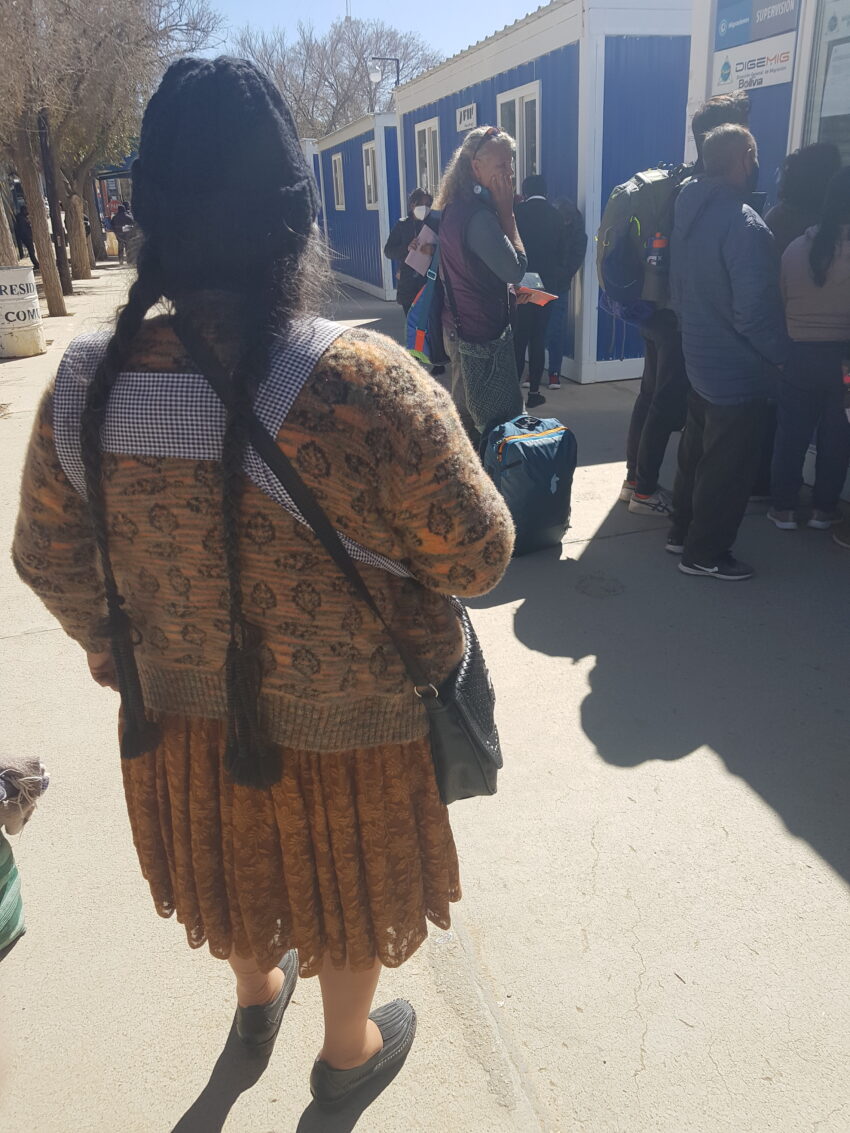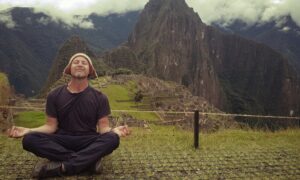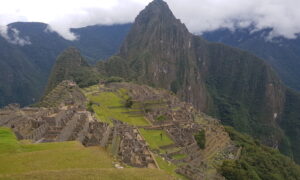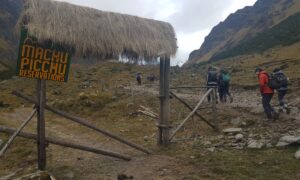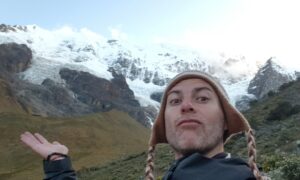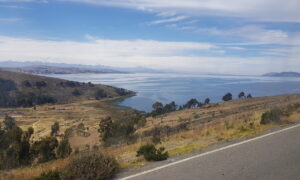
I arrived in Argentinian border town, La Quiaca (pronounced La key-ah-ka), quite late and hadn’t booked accommodation beforehand. Caught off guard without a phone signal, I couldn’t scope out options online or on Google Maps. Instead, I resorted to the old method of meandering through the streets in search of a place to stay.

The town felt a bit scruffy, and having had a bad encounter with an aggressive dog in Tilcara, I was reluctant to roam around at night in search of the best value accommodation. So I had to settle for the first place I stumbled upon, even though I ended up paying more than I wanted for the night. I found myself in a triple room with a modern, beautifully finished en suite. It was unnecessarily fancy for a quick stopover before crossing the border, but I welcomed having a room and bathroom to myself for a change.
The next morning, I was all set and ready for whatever awaited me at the border. I had photos, documents, and copies of everything I thought I might need. The border was within walking distance, and at 9 AM, I set off to cross it before the buses from afar start clogging up the immigration queues.
Usually, border crossings procedure involve stamping out of one country, crossing a country-less space, and then stamping into the next country. But this border was different. I had my passport briefly checked at what I assumed was the Argentina immigration window, although no stamping took place. Instead, I was directed to a second window for another passport check. This time, I also needed to provide my COVID certificate. After a quick document scan, I was instructed to first go to the Bolivian side to get a Bolivian visa before returning back to this window at the Argentine side. Everything was explained to me in Spanish, so this was my best guess at the interpretation of the procedure. It was quite unusual, but I assumed they wanted to ensure one could actually enter Bolivia before checking them out of Argentina.
So, off I went. I crossed the bridge and entered Bolivia with very little restrictions or strict directions towards the office. It felt like I could have walked right past the immigration office without being stopped. I obviously had no intention to cross illegally, so I entered the immigration office and handed over all my documents for the visa application. They checked it and prompted me for 110 USD in Bolivianos, the Bolivian currency. I inquired whether I could pay with Argentine pesos for the visa. They said no, but surprisingly allowed me to go into the town of Villazon on the Bolivian side to exchange my Argentine pesos for Bolivianos. It felt strange crossing into country so easily without getting my passport stamped. It’s almost like when you exit a store, and the detector thing beeps, but the security lets you out anyway without even checking if you’ve stolen anything.
There were plenty of currency exchanges once I got into the town. Even though I was in a hurry due to being in the country somewhat illegally, I was not going to just except the first exchange rate and ventured around to ensure I found the best rate. After a few samples I was confident I got a good enough rate and returned to the border office with the visa money in the local currency. We continued the formalities and I received my visa immediately, affixed to one of the pages in my passport. With my visa in hand, I returned back over the bridge to Argentina to complete the process and get my passport stamped. The process became even more unusual when I discovered they don’t physically stamp your passport out or in. They claimed it’s all done digitally. Despite my scepticism, numerous border officials assured me that this was indeed the case.

After what turned out to be a slightly convoluted but ultimately straightforward crossing, I found myself in Bolivia. It’s fascinating how things change instantly after crossing a border, and Bolivia was no exception. The markets on the other side were livelier, cheaper, and covered more street space. The streets appeared less maintained, giving an immediate sense of being in a slightly less affluent country. I was intrigued and got the feeling I would have a great time in Bolivia.
On foot, I promptly made my way to the bus station on the far side of town to catch a ride to my first town on my Bolivian itinerary, Tupiza. Tupiza promises wild arid landscapes and is said to be the wild west of South America.
But first, I haven’t been feeling like enough of a tourist, so I upped my game big time and invested in the quintessential South American tourist attire, a llama hat!
But before heading to the bus stop, I felt like I needed to step up my tourist game. So I did what millions of tourists did before me. I invested in the quintessential South American tourist attire: a llama hat!


